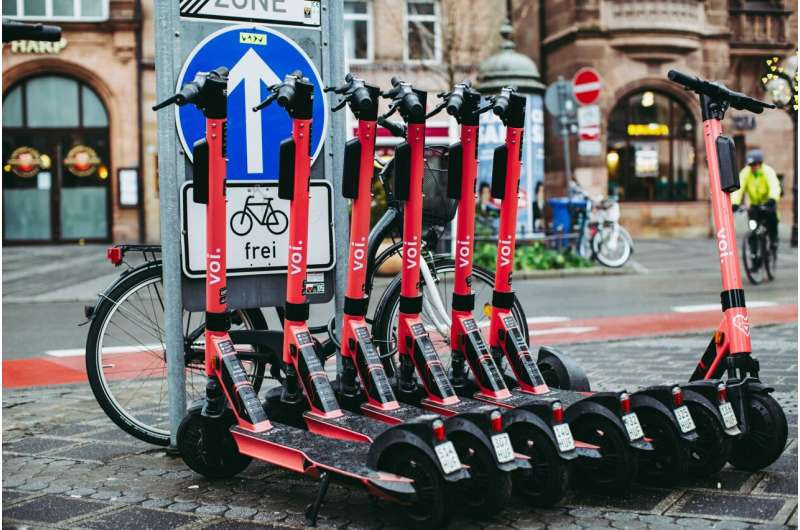This article has been reviewed according to Science X's editorial process and policies. Editors have highlighted the following attributes while ensuring the content's credibility:
fact-checked
trusted source
proofread
Community-based electric mobility projects that integrate equity

The backbone of every community, transportation connects people to everything from jobs and grocery stores to health care, vital services and social events.
But historically, residents of underserved communities lack access to transportation, creating barriers to its many benefits. Many underserved communities are located near industrial areas with high truck traffic, highways, rail yards and ports. These residents are disproportionally exposed to air pollution and other environmental harms.
In electrifying the country's transportation system, the U.S. is committed to giving all residents fair and equitable access to clean, affordable transportation and its benefits. To help ensure equity in transportation projects, it is critical that underserved communities have a strong voice in planning the initiatives that will impact their neighborhoods for decades to come.
Recently, the U.S. Department of Energy's (DOE) Argonne National Laboratory led the development of five case studies on projects that center equity in community-based electric mobility, or e-mobility, projects. E-mobility is the use of electricity to power a wide range of transportation modes, from cars and transit to bikes and scooters.
"The case studies describe best practices and valuable lessons learned and serve to help others seeking to learn more about developing sustainable e-mobility projects. This includes agencies, nonprofits, companies and others centered on electrification," said Joann Zhou, an Argonne principal transportation systems analyst and group leader for vehicle and energy technology and mobility analysis.
Along with increasing affordable mobility options, the projects are designed to create educational, business and job opportunities, reduce air pollution and improve public health in the communities.
"When community residents' mobility—the very capability that enables access to job opportunities and other necessities—is limited, disadvantages compound rapidly for residents," said Argonne project leader Patricia Weikersheimer. "These case studies show that projects that center deep community involvement from the very beginning get the most traction."
The projects are in various stages of development. They are led by teams of public and private stakeholders and local community organizations who prioritize gathering and integrating community input. The initiatives also demonstrate the importance of coordinating early with utilities, local governments and other decision-makers.
Projects aim to electrify underserved areas
The projects spotlighted in the case studies span a diverse geographic mix of urban and rural areas. These range from the Bronx in New York to tribal territories in states across the upper Midwest. Projects include developing infrastructure and charging hubs for electric vehicles (EVs), electrifying heavy-duty truck fleets and bringing low-carbon shared mobility to underserved areas.
For example, the Stockton Mobility Collective project in California's San Joaquin Valley aims to bring subsidized shared mobility options like e-carsharing and e-bikesharing to transportation-challenged areas. The pilot project includes elements such as a mobility-as-a-service electronic platform. This enables users to plan, book and pay for a range of mobility services from a phone or computer.
In the Hunts Point neighborhood in the South Bronx, asthma rates among youth are 2.5 times higher than in New York City generally. Hunts Point is home to New York state's busiest trucking hub. This generates high levels of ozone, particulate matter and nitrogen oxides. In the Bronx Is Breathing project, a key goal is creating a new public, multi-user freight charging hub designed to electrify heavy-duty fleets and dramatically reduce air pollution and noise.
The case studies are available online.


















